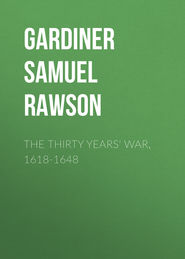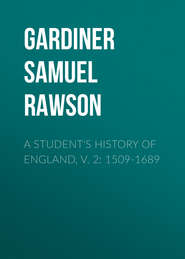По всем вопросам обращайтесь на: info@litportal.ru
(©) 2003-2024.
✖
What Gunpowder Plot Was
Настройки чтения
Размер шрифта
Высота строк
Поля
146
Pat. 6 Edw. VI., Part 5.
147
Pat. 30 Eliz., Part 10.
148
Parliament Place.
149
Assignment, July 17, 42 Eliz., Land Revenue Records Office, Inrolments v. fol. 104. I have been unable to trac Whynniard’s tenure of the house I have assigned to him. It was within the Old Palace, and was probably the official residence of its keeper. Whynniard was appointed Keeper of the Old Palace in 1602. Pat. 44 Eliz., Part 22.
150
See plan at p. 81. Was this the baker in whose house Catesby tried in vain to secure a room? – ‘Bates’s Confession, Dec. 4, 1605’; G. P. B. No. 145.
151
Whynniard was Keeper of the Wardrobe at Hampton Court, which would account for his servant being concerned in the Queen’s removal.
152
Otherwise Parliament Stairs.
153
I suspect that this was what was afterwards known as Cotton Garden. I have been unable to trace the date at which it was conveyed to Sir Robert Cotton.
154
G. P. B. No. 40.
155
See p. 63.
156
See p. 90.
157
This we know from Capon’s pencilled notes to the sketch in the frontispiece.
158
The late Chairman of the Works Department of the London County Council; than whom no man is better qualified to speak on such matters.
159
There are indeed old walls marked in Capon’s plan beneath the ground, but we do not know of what substance they were composed or how near the surface they came.
160
Speed, no doubt, rested this assertion on Winter’s evidence that ‘we underpropped it, as we went, with wood.’ (See p. 64.)
161
Gerard, pp. 66, 67.
162
See the remarks of the Edinburgh Reviewer on the ease with which Baron Trenck executed a far harder piece of work without being discovered for a considerable time.
163
Used as such, Father Gerard notes, till the Union with Ireland in 1800.
164
This was true of the general line of the bank, but, as will be seen at pp. 81, 83, there was a kind of dock which brought the water within about thirty yards of the house.
165
Gerard, pp. 59, 60.
166
G. P. B. No. 129.
167
This is clearly a slip. The cellar was not under the house hired by Percy.
168
For its possible situation see p. 91; or it may have been erected in the courtyard shown in the plans at pp. 82, 83.
169
See pp. 34, 65. The difficulty of measuring the thickness of the wall was not so great as Father Gerard fancies. In 1678 Sir Christopher Wren reported that ‘the walls are seven feet thick below’ (Hist. MSS. Com. Report XI. App. ii. p. 17). As he did not dig below the surface this must mean that they were seven feet thick at the level of the floor of the so-called cellar, and this measurement must have been known to the conspirators after they had access to it. I am informed that in the case of a heavy wall, especially when it is built on light soil, as was the case here, the foundations are always constructed to be broader than the wall itself. The diggers, observing the angle of the face they attacked, might roughly calculate that a foot on each side might be added, thus reaching the nine feet.
170
Father Gerard (p. 64, note 2) writes: “There is, as usual, hopeless confusion between the two witnesses upon whom, as will be seen, we wholly depend for this portion of the story. Fawkes (November 17, 1605) makes the mining operations terminate at Candlemas, and Winter (November 23) says that they went on to ‘near Easter’ (March 31). The date of the hiring the ‘cellar’ was about Lady Day (March 25).” I can see no contradiction. The resumption of work for a third time in March was, from Winter’s mode of referring to it, evidently for a very short time. “And,” he says, “near to Easter, as we wrought the third time, opportunity was given to hire the cellar.” Fawkes, though less clear and full, implicitly says much the same thing. He says that ‘about Candlemas we had wrought the wall half through,’ and then goes on to describe how he stood sentinel, &c. Then at the beginning of another paragraph we have “As they were working upon the wall they heard a rushing in a cellar, &c.” Fawkes gives no dates, but he says nothing to contradict the third working spoken of by Winter.
Pat. 6 Edw. VI., Part 5.
147
Pat. 30 Eliz., Part 10.
148
Parliament Place.
149
Assignment, July 17, 42 Eliz., Land Revenue Records Office, Inrolments v. fol. 104. I have been unable to trac Whynniard’s tenure of the house I have assigned to him. It was within the Old Palace, and was probably the official residence of its keeper. Whynniard was appointed Keeper of the Old Palace in 1602. Pat. 44 Eliz., Part 22.
150
See plan at p. 81. Was this the baker in whose house Catesby tried in vain to secure a room? – ‘Bates’s Confession, Dec. 4, 1605’; G. P. B. No. 145.
151
Whynniard was Keeper of the Wardrobe at Hampton Court, which would account for his servant being concerned in the Queen’s removal.
152
Otherwise Parliament Stairs.
153
I suspect that this was what was afterwards known as Cotton Garden. I have been unable to trace the date at which it was conveyed to Sir Robert Cotton.
154
G. P. B. No. 40.
155
See p. 63.
156
See p. 90.
157
This we know from Capon’s pencilled notes to the sketch in the frontispiece.
158
The late Chairman of the Works Department of the London County Council; than whom no man is better qualified to speak on such matters.
159
There are indeed old walls marked in Capon’s plan beneath the ground, but we do not know of what substance they were composed or how near the surface they came.
160
Speed, no doubt, rested this assertion on Winter’s evidence that ‘we underpropped it, as we went, with wood.’ (See p. 64.)
161
Gerard, pp. 66, 67.
162
See the remarks of the Edinburgh Reviewer on the ease with which Baron Trenck executed a far harder piece of work without being discovered for a considerable time.
163
Used as such, Father Gerard notes, till the Union with Ireland in 1800.
164
This was true of the general line of the bank, but, as will be seen at pp. 81, 83, there was a kind of dock which brought the water within about thirty yards of the house.
165
Gerard, pp. 59, 60.
166
G. P. B. No. 129.
167
This is clearly a slip. The cellar was not under the house hired by Percy.
168
For its possible situation see p. 91; or it may have been erected in the courtyard shown in the plans at pp. 82, 83.
169
See pp. 34, 65. The difficulty of measuring the thickness of the wall was not so great as Father Gerard fancies. In 1678 Sir Christopher Wren reported that ‘the walls are seven feet thick below’ (Hist. MSS. Com. Report XI. App. ii. p. 17). As he did not dig below the surface this must mean that they were seven feet thick at the level of the floor of the so-called cellar, and this measurement must have been known to the conspirators after they had access to it. I am informed that in the case of a heavy wall, especially when it is built on light soil, as was the case here, the foundations are always constructed to be broader than the wall itself. The diggers, observing the angle of the face they attacked, might roughly calculate that a foot on each side might be added, thus reaching the nine feet.
170
Father Gerard (p. 64, note 2) writes: “There is, as usual, hopeless confusion between the two witnesses upon whom, as will be seen, we wholly depend for this portion of the story. Fawkes (November 17, 1605) makes the mining operations terminate at Candlemas, and Winter (November 23) says that they went on to ‘near Easter’ (March 31). The date of the hiring the ‘cellar’ was about Lady Day (March 25).” I can see no contradiction. The resumption of work for a third time in March was, from Winter’s mode of referring to it, evidently for a very short time. “And,” he says, “near to Easter, as we wrought the third time, opportunity was given to hire the cellar.” Fawkes, though less clear and full, implicitly says much the same thing. He says that ‘about Candlemas we had wrought the wall half through,’ and then goes on to describe how he stood sentinel, &c. Then at the beginning of another paragraph we have “As they were working upon the wall they heard a rushing in a cellar, &c.” Fawkes gives no dates, but he says nothing to contradict the third working spoken of by Winter.









